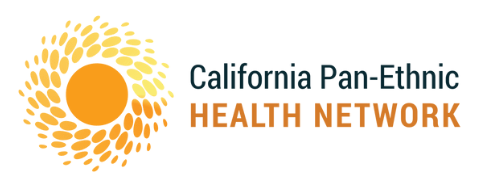As the state continues to expand its vaccination priority groups and as we continue to receive more vaccines, CPEHN wanted to highlight and make transparent the data on how the state is doing in vaccinating Black, Indigenous, and other communities of color.
CPEHN created this chart based on publicly available data from the California Department of Public Health. This chart allows readers to compare current vaccination progress towards the state’s overall race/ethnicity breakdown, as a way to gauge progress towards equitable vaccine access for all Californians.
Part of equity is making data transparent and accessible, so our communities can see and know what is happening and can better know who is being left out and where resources need to be directed.
Who is currently eligible to be vaccinated?
Check out https://covid19.ca.gov/vaccines/ for the latest updates.
At first, California prioritized those 65+ and those who work in health care settings. Then the State began vaccinating emergency service workers, education and childcare workers, and food and agricultural workers.
After many conversations with advocates, the state announced it would direct 40% of vaccines to the communities in the lowest quartile of the Healthy Places Index (HPI). The HPI measures local community conditions like housing, transportation, and education, as well as other indicators of health and well-being.
The state then added those with high-risk disabilities and those in congregate settings like detention centers and unhoused people.
As supply increases, and due to direction from the Federal administration, all adults will be eligible to get the vaccine by April 15th. That doesn’t mean you will be vaccinated by April 15th, simply that you will be able to “get in line” to be vaccinated.
How is the data collected?
When you register for an appointment or when you go to your health care provider, or wherever you get the shot, you are asked to complete a form. This form includes race, ethnicity, gender, and age along with other identifiers.
What are the “other,” “unknown,” and “multi-racial” categories?
Other means the respondent wrote in a race or ethnicity that does not fall into one of the other categories.
Unknown means the person declined to answer the question about race and ethnicity. This may also indicate that the individual did not fill out any demographic questions at all.
Multi-racial means someone marked multiple race or ethnicity categories. The wide disparity in this category compared to the state population breakdown may reflect differences between how the State and U.S. Census Bureau collect this data.
Who does Asian American include?
Asian Americans are the fastest growing race group in America. The term broadly refers to immigrants from Asia and their descendants. Because of Asia’s size, Asian Americans belong to a diverse set of ethnicities and nationalities, including but not limited to Chinese, Japanese, Korean, Indian, Vietnamese, Thai, Pilipino, Cambodian, Malaysian, and many more. There is significant socioeconomic disparity among Asian Americans due to differing countries of origin, shifting immigration contexts, and experiences of racially discriminatory American policies that targeted different Asian groups over the country’s history.
As a result, data that fails to disaggregate Asian American into its constituent groups frequently masks disparities while perpetuating the false narrative that all Asian Americans are socioeconomically equivalent to white. Within the context of vaccination, it means that although Asian Americans as a whole are being vaccinated at a rate close to their share of the state’s population, there may be hidden disparities between different Asian American subgroups.
What disparities are we seeing?
The largest disparities are among Black and Latinx Californians. Both of these groups have received a significantly smaller share of all vaccines compared to their share of the State population, suggesting current vaccine priorities and strategies are not reaching these populations as well.
If we were seeing racially equitable vaccination rates, the breakdown of vaccination rates would be similar to the breakdown of the statewide population.
Why are we seeing such large disparities?
The American health care system at large has failed to provide equitable access to quality care. Despite many opportunities and attempts to close long-standing disparities in care access and quality, health care systems continue to inequitably serve BIPOC communities. From microaggressions to negative experiences to the history of medical racism and mistreatment, communities of color regularly interface with systems that show themselves to be untrustworthy.
Barriers to COVID-19 testing, resources, contact tracing, and now vaccination include:
- Cultural and linguistic barriers. Services are not always provided in a culturally-accessible fashion (e.g. in partnership with trusted community institutions), or in a language that people speak.
- Inequitable resource distribution. Vaccines are largely distributed through mass vaccination sites and pharmacies, which are not evenly distributed through all communities.
- Confusing sign up systems. Most vaccines signups are through online systems, which require an internet connection. Not everyone can easily navigate the online vaccine signup system.
- Lack of transportation. Not all people have a vehicle they can drive to a vaccination. In addition, many vaccination sites are drive-through only and do not provide walk-up services.
Why are vaccination rates for “Other” so high compared to its share of the state population?
This category may have large numbers due to differences in race and ethnicity classification between the California Department of Public Health, vaccinating agents such as pharmacies and county clinics, and the U.S. Census Bureau.
